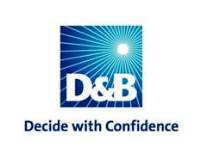After jumping to a three-year high during the first quarter of 2014, the average time taken for commercial invoices to be paid has fallen sharply to 53.4 days as business get their finances back in order and pay more of their bills within standard terms.
 According to Dun & Bradstreet’s Trade Payments Analysis, 47.3 per cent of invoices were paid within a 30-day period during Q2 2014, an increase from 42.9 per cent in the previous quarter and just 38.5 per cent at the same time last year.
According to Dun & Bradstreet’s Trade Payments Analysis, 47.3 per cent of invoices were paid within a 30-day period during Q2 2014, an increase from 42.9 per cent in the previous quarter and just 38.5 per cent at the same time last year.
While the analysis reveals that more than half of all invoices are still being settled beyond standard terms, the improvement has taken business-to-businesses payments times to the fastest level for a second quarter period since 2007. At 53.4 days, businesses are paying their invoices three days earlier than in the previous quarter and one day faster than in Q2 2013.
“Payment times typically improve in the three months to June as businesses get their houses in order following a first quarter affected by summer trading hours and a traditionally slower payment cycle,” said Gareth Jones, CEO of Dun & Bradstreet–Australia and New Zealand. “This most recent correction, however, is sharper than we saw last year and aligns with other positive data from the first half of 2014, such as fewer company failures and declines in late payment and failure risks. “The prompt payment of invoices is critical to a healthy cash flow, which has been an issue of significant concern for businesses,” Mr Jones added.
According to D&B’s latest Business Expectations Survey, 26 per cent of firms have indicated that cash flow is the issue most likely to influence their operations in the next three months. This is the most common response, ahead of other factors including interest rates, the level of the Australian dollar, salaries and wages, fuel prices and access to credit.
Highlighting the difficulty facing businesses in regulating their cash flow, the same survey found that 41 per cent of respondents would miss payments to their trade suppliers if unable to meet all of their obligations, followed by other bills including credit cards, loans, telephones, utilities, mortgages and the internet.
Businesses of all sizes have improved their payment performance over the past 12 months, although the economy’s largest operators have shown the least progress. According to D&B, companies employing more than 500 staff are consistently the slowest to pay their accounts, and in the second quarter of the year these firms took an average of 55.6 days; three days slower than the national average.
To download the entire report click on this link: 2014-09-30 More businesses paid on time
For more information please contact: Josh Maher +61 498 142 567 +61 3 9828 3644; maherj@dnb.com.au






















